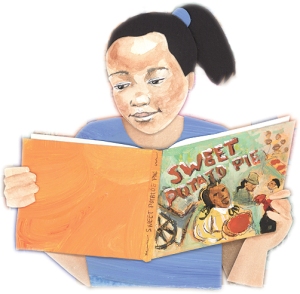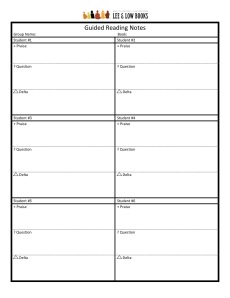Empowerment Post-Assessment
![]() Jaclyn DeForge, our Resident Literacy Expert, began her career teaching first and second grade in the South Bronx, and went on to become a literacy coach and earn her Masters of Science in Teaching. In this series for teachers, educators, and literacy coaches, Jaclyn discusses different strategies for ensuring students hit end-of-year benchmarks in reading.
Jaclyn DeForge, our Resident Literacy Expert, began her career teaching first and second grade in the South Bronx, and went on to become a literacy coach and earn her Masters of Science in Teaching. In this series for teachers, educators, and literacy coaches, Jaclyn discusses different strategies for ensuring students hit end-of-year benchmarks in reading.
Two weeks ago, I shared with you some resources to use when determining a reading goal for each student, and last week I talked about how to motivate students about their reading goal and about how to  schedule out regular assessment. Today, I want to get into the nuts and bolts of the running record assessment time, and how to create a post-assessment conference that really empowers students.
schedule out regular assessment. Today, I want to get into the nuts and bolts of the running record assessment time, and how to create a post-assessment conference that really empowers students.
The first part of my assessment time with each individual student is the assessment itself. Once I’ve determined the student’s independent reading level (each assessment program differs in terms of what a student needs to score to be considered independent), I take out a secondary assessment kit and read with the student on their instructional level to determine each student’s “Magic Three.” The “Magic Three” are the three reading comprehension skills and strategies I’m going to send that student off with to focus on during their independent reading time between now and the next assessment.
When reading with a student on their instructional reading level, I consider the following:
“The word reading has two senses, often confusingly lumped together. The first means the process of turning printed marks into sounds and these sounds into words. But the second sense means the very different process of understanding those words. Learning how to read in the first sense—decoding through phonics—does not guarantee learning how to read in the second sense—comprehending the meaning of what is read…[c]hildren who lag in comprehension in early grades tend to fall even further behind in later years.”
E.D. Hirsch, Jr. The Knowledge Deficit
Different running record assessment systems have different accuracy benchmarks, but when I do running record with a student, only a small percentage of what I’m looking for has to do with decoding. On the whole, I’ve found students can decode at a far higher level than they can comprehend, so this usually isn’t a factor when dealing with a student’s instructional level. What I look for is: a) do they comprehend the story on a BASIC level? and b) how much of the story were they able to EXTEND to comprehend on a deeper level? Most students, when they’re reading at their instructional level, may have a few minor problems with the basic comprehension, but really tend to struggle when asked to extend.
I always bring my Guided Reading notes to an assessment (template above, and you can download the PDF here), because I want to know if the student in question is still struggling with the same types of extension questions as they were during the previous Guided Reading cycle. As the student answers each deeper extension comprehension question that accompanies this secondary assessment text, I’m thinking: What are the three questions that I want this student to ask themselves each time they read independently that will really move them forward? I write these three questions for each student on an index card, which they use as a bookmark until the next assessment cycle.
Further reading:
Determining and delivering student-friendly “Magic Three” questions
Regular assessment and student motivational strategies
How do you motivate your students in reading? Drop me an email at curriculum@leeandlow.com or share yours in the comments!









